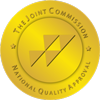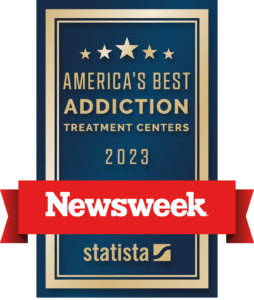Flexeril Addiction and Treatment Options
Flexeril is a central nervous system (CNS) depressant. It is typically prescribed for short-term treatment of muscle pain, injury, and spasms. If you take Flexeril as prescribed, there are minimal side effects. There are also very few long-term effects. However, using Flexeril and alcohol can lead to Flexeril addiction.

What is Flexeril?
Cyclobenzaprine is the generic name of Flexeril. It is a prescription muscle relaxer. Flexeril was first approved in 1977. It was available in extended-release and immediate versions. Flexeril is similar to antidepressants because it affects the CNS. With all the CNS depressants, what is Flexeril used for?
What is Flexeril Used for?
Flexeril is a short-term treatment for muscle pain and discomfort. This pain can be from strains, sprains, spasms, and muscle injury. However, doctors don’t typically prescribe Flexeril alone. It is generally used alongside physical therapy and rest.
On occasion, Flexeril is used to treat musculoskeletal disorders. Fibromyalgia is an example of these disorders. Because Flexeril affects the CNS, it blocks pain that travels from the muscle to the brain.


The Effects of Flexeril
People who take Flexeril for severe muscle pain sleep better and have more energy. They also notice better motor skills. However, this drug can have a variety of harmful effects. These side effects range from mild to severe. For example:
- Drowsiness
- Dry mouth
- Fatigue
- Headaches
- Dizziness
- Nausea
- Constipation
- Blurred vision
- Confusion
- Acid reflux
- Abdominal pain
- Fever
- Nervousness
- Problems urinating
The most severe effect of Flexeril is an overdose. An overdose can happen if you take too much of the drug. For the most part, Flexeril doesn’t produce a euphoric high. But, people misuse it because of its relaxing effects.
How Often Can You Take Flexeril?
What Does Flexeril Look Like?
Flexeril is available in both 5mg and 10 mg tablets. However, the 5 mg tablets are 5-sided and yellow-orange. The word FLEX is on them. At the same time, the 10 mg tablets are 5-sided and D shaped. They are butterscotch yellow with FLEXERIL on them.

What Happens When You Overdose on Flexeril?
If you overdose on Flexeril, it can cause cardiac arrest, dangerously low blood pressure, and seizures. Moreover, Flexeril overdose can lead to heart attacks and even death. Signs of Flexeril overdose include:
- Chest pain
- Tremors
- Loss of muscle control
- Agitation
- Confusion
- Hallucinations
- Vomiting
- Rapid heart rate
- Slurred speech
- Trouble breathing
- Extreme drowsiness
- Coma
The risk of Flexeril overdose is increased when combined with other drugs. This risk is higher when combined with other CNS depressants such as alcohol and benzos. Combining Flexeril and alcohol can cause extreme tiredness and respiratory depression. However, many people still mix Flexeril and alcohol to intensify the effects.
Symptoms of Flexeril Misuse and Addiction
Most doctors and professionals consider Flexeril to be non-addictive. But, an addiction to Flexeril is possible. Some people like the depressive effects of the central nervous system. The relaxing effects of Flexeril can quickly lead to misuse and addiction.
If people use high doses of Flexeril, it alters brain activity and can cause various effects. However, chronic use can lead to dependence. Dependence happens when people take higher doses for an extended time. Their body gets used to the higher doses and then needs even more to get the same effects.
As a result, people develop Flexeril addiction. Additionally, people may have mild withdrawal symptoms after using chronically high doses.
Common symptoms of Flexeril addiction include:
- Elevated heart rate
- Nausea
- Extreme tiredness
- Dizziness
- Dry mouth
- Headache
- Confusion
- Cognitive impairment

Signs of Flexeril Addiction
Some signs that a person is struggling with Flexeril addiction include:
- Taking Flexeril longer than prescribed
- Needing more of the drug to achieve the same effects
- Life revolves around using or thinking of using Flexeril
- Unable to stop using Flexeril
- Faking muscle pains or spasms to get Flexeril
- Changes in behavior, appearance, and hygiene
- Changes in sleep habits
- Slurred speech
- Mood swings
- Weight gain or loss
- Impaired coordination
Combining Flexeril and alcohol or other drugs is also a sign of Flexeril addiction. This combination creates more euphoric effects. Alcohol, also a CNS depressant, is commonly used along with Flexeril. Using Flexeril and alcohol causes a more intense “high” or sedation.
Flexeril is also taken to come down from stimulants such as Adderall or cocaine. However, a person who struggles with substance use disorder may have withdrawal symptoms if they stop or reduce their dose. Although withdrawal symptoms are generally mild, they may include headaches, nausea, and craving.
Long-Term Effects of Flexeril Addiction
- Tolerance
- Relationship issues
- Stomach problems
- Substance use disorder
- Overdose

Who Typically Misuses Flexeril?
Generally, young adults ages 18 to 25 misuse Flexeril at higher rates than other age groups. This may be the result of the availability of information on Flexeril. Because of the internet, people can find out the desirable effects of Flexeril. Additionally, they can find out how Flexeril and alcohol together intensify the impact.
Prescription drugs like Flexeril are widely misused among all age groups. For example, SAMHSA reports that misuse is increasing in adults over 50. This increase is concerning due to the harmful effects of drugs like Flexeril in this age group. Generally, Flexeril isn’t used in older adults because of high-risk factors.
Lastly, people with a prescription for Flexeril can build a tolerance to Flexeril. This requires them to take higher doses to feel the same effects. However, this increase can make the brain become dependent on Flexeril. As a result, if a person stops using Flexeril, the brain can not function.
Can You Mix Flexeril and Alcohol?
Mixing alcohol and any drugs is a bad idea. But, mixing Flexeril and alcohol is extremely dangerous. The reason being is the way Flexeril and alcohol together affect your body.
Flexeril and alcohol are both CNS depressants. For instance, they slow down brain activity. This slowdown affects your breathing and heart rate as well. Furthermore, you will feel relaxed and tired.
Since Flexeril and alcohol are depressants, using them together intensifies their effects. For example, Flexeril can make you dizzy or tired. If you also drink alcohol, the effects become extreme.
Mixing Flexeril and alcohol can cause:
- Extreme drowsiness
- Dizziness
- Slowed breathing
- Loss of coordination
- Memory problems
- Risk of seizures
- The risk of overdose is increased
Above all, Flexeril and alcohol use can lead to a substance use disorder. So, if you are struggling with substance use disorder, it’s important to seek treatment.
Statistics on Flexeril Use and Addiction
In 2011 there were over 25 million prescriptions written, including for Flexeril. Additionally. NIDA reports that more than 50 million Americans over 12 have misused prescription drugs. Above all, the rise in emergency visits from Flexeril addiction has more than doubled in the last 5 years. This increase rose from 15,830 to 31,763 visits.
Flexeril addiction is a chronic disease. Therefore, it requires chronic or lifelong treatment. So, if you or someone you love struggles with Flexeril addiction, it’s crucial to seek treatment.
Treatment for Flexeril addiction can help stop the cycle of Flexeril misuse. It also allows you to work toward a healthier, drug-free life. Furthermore, treatment can help with any co-occurring mental illnesses. A comprehensive treatment program should consist of traditional and alternative therapies.
There is a variety of treatment settings for Flexeril addiction. Typically the first step in recovery is medical detox. However, not all people struggling with Flexeril addiction need to detox medically. But, if you also struggle with alcohol use disorder, medical detox may be necessary.
Inpatient or residential treatment offers 24-hour supervision. Inpatient treatment typically lasts for 30 days. However, it’s dependant on the person and their Flexeril addiction.
When you enter inpatient treatment, you can focus entirely on your recovery. You don’t have the pressure and stress of daily life. While in inpatient treatment, you are busy with various therapies, peer support, groups, and medical care.
Outpatient treatment also offers therapies and peer support. But, it is a part-time treatment program. So, you will attend treatment during the day and go home at night.
Outpatient treatment programs are typically less expensive. They are also more accessible for some. This treatment program allows you to attend treatment while still attending work, school, and care for your family. However, this treatment is generally for those with a less severe Flexeril addiction and require a high commitment to recovery.
If you think treatment ends once you complete a treatment program, you are setting yourself up for recurrence of use. Substance use disorder is a chronic disease. For this reason, it requires long-term or chronic treatment to maintain recovery.
Aftercare treatment focuses on the prevention of recurrence of use and maintaining recovery. Aftercare treatment typically consists of:
- Continuing individual and group therapies
- Regularly attending support groups and 12-step meetings
- Having a sponsor to call when you feel like using
Start Your Recovery Journey Today at Sana Lake Recovery
If you or a loved one struggles with substance use disorder, then today is the day to get help. Our compassionate, trained professionals are waiting to answer all your treatment questions. Don’t let Flexeril or other substances control your life anymore. Contact us today, and start your recovery journey.
References:
https://www.deadiversion.usdoj.gov/drug_chem_info/cyclobenzaprine.pdf
https://www.ncbi.nlm.nih.gov/pmc/articles/PMC487008/#:~:text=Typical%20symptoms%20include%20dry%20mouth,decreased%20sweating%20(Table%201).
https://www.samhsa.gov/homelessness-programs-resources/hpr-resources/substance-use-treatment-older-adults
https://www.rxlist.com/flexeril-drug.htm#dosage



